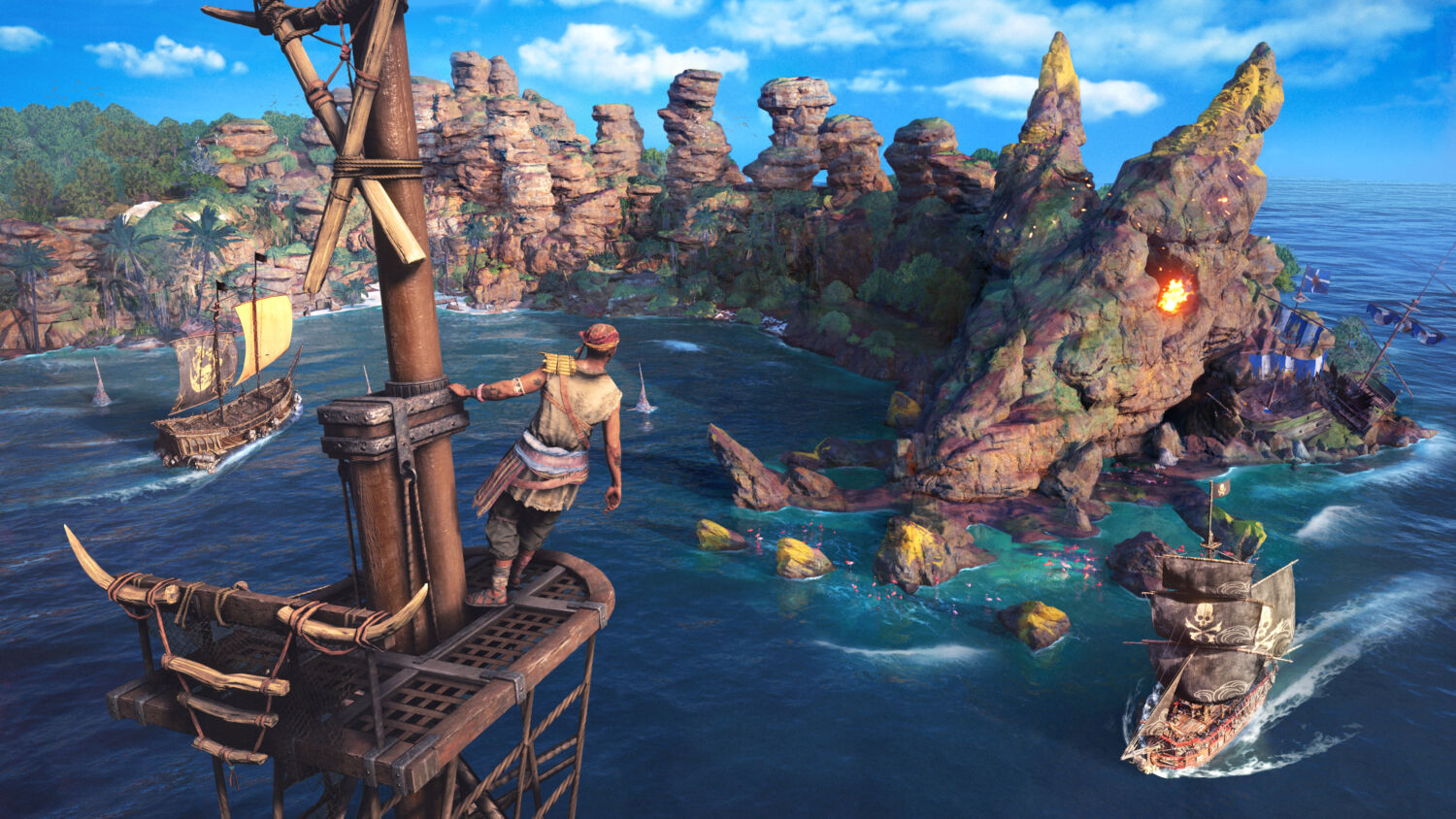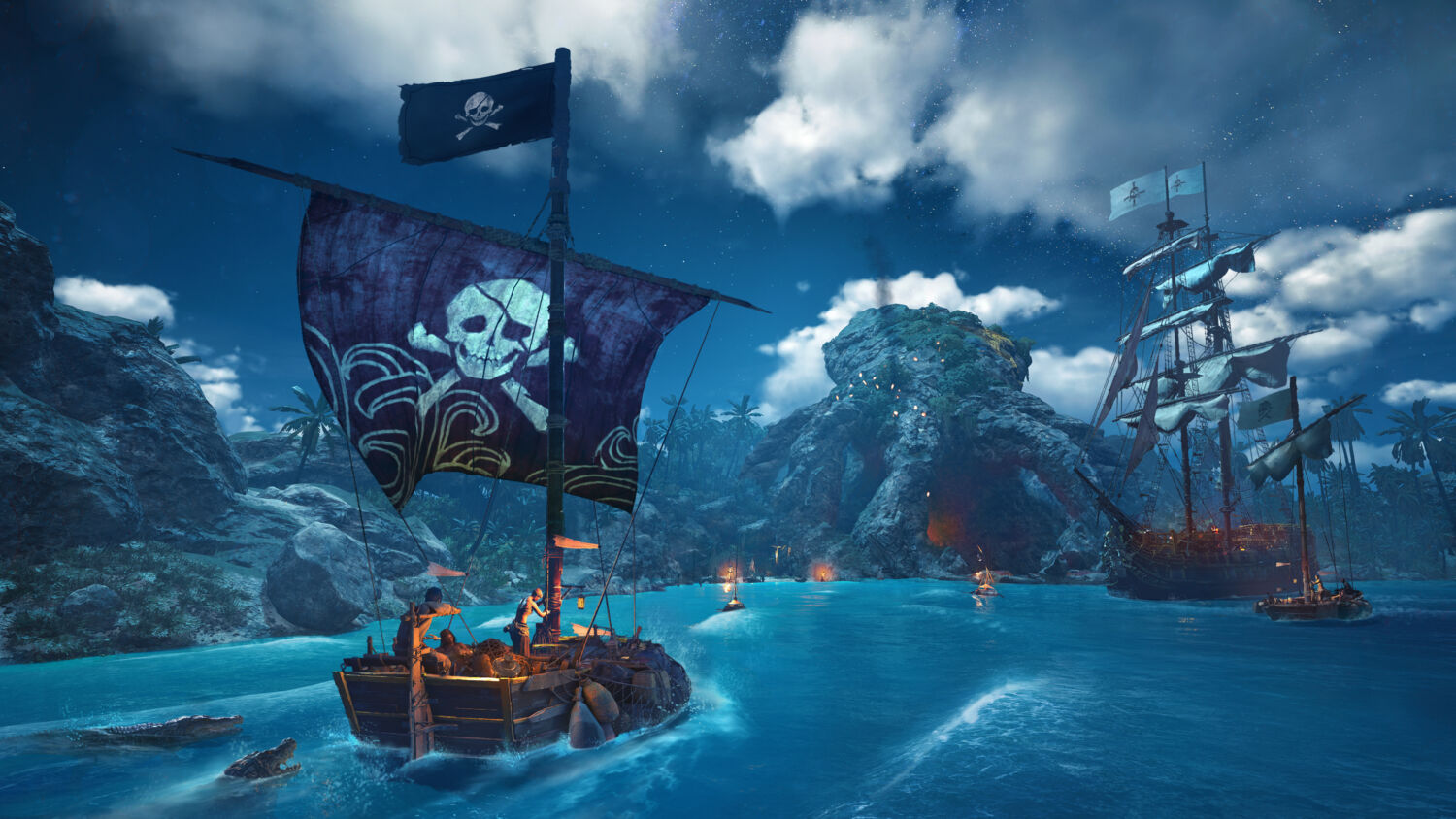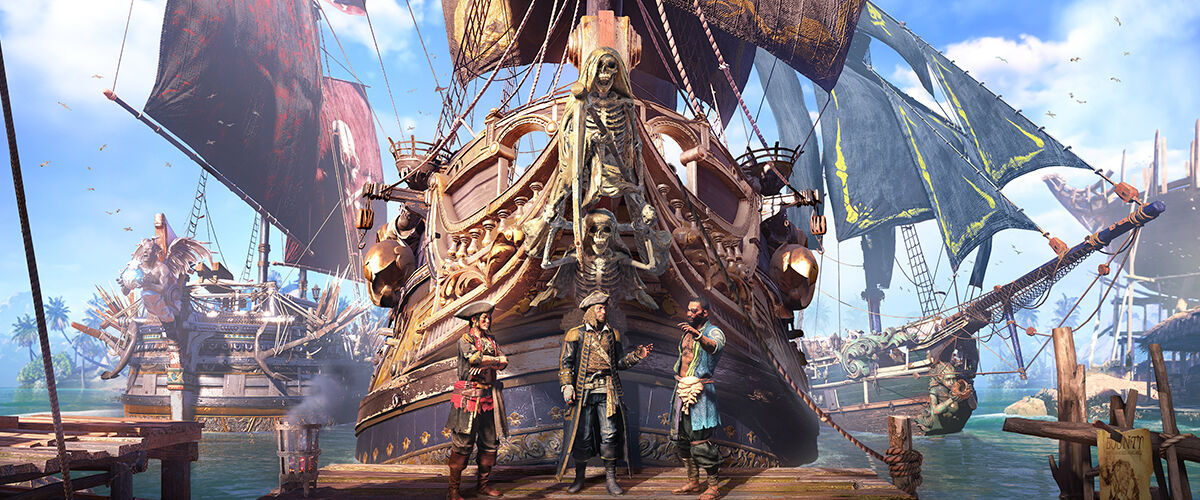Game development is a gargantuan task for any team to take on, whether it is an indie studio or a well-established giant like Ubisoft. And as we were taken on a studio tour at Ubisoft Singapore to learn more about the process of making Skull and Bones, it was hard not to be amazed by the lengths to which this crew has gone to push this game towards its launch on 16 February 2024.

Bringing a pirate fantasy to life is hard enough, but to do so in a localised context within the waters of Asia is a whole other matter altogether. There are different people, cultures, accents, and beliefs to get right for both narrative and gameplay purposes, and there’s also plenty of work to be done on the visual front, straddling the line between fantasy and authenticity when it comes to pirate kingpins, ships and vanities, and surprisingly, sea monsters.
Not to mention the water tech that has always been lauded since the days of Assassin’s Creed IV: Black Flag, now made even better with time and even more expertise on the team. It seems like there are enough ingredients to deliver a swashbuckling adventure worthy of legend. On the visuals and sound design front, the game definitely meets the mark; it is the gameplay sections that remain in choppy waters.
Skull and Bones has players working their way up the pirate hierarchy, doing tasks for kingpins and factions, all while fattening up their own pockets and getting more upgrades when it comes to weapons, defences, and the like, further etching their name into pirate folklore.

With an open world size of 620km2, that means players are going to be doing a lot of sailing, and going from point A to B can feel frustratingly slow. Sure, there are flotsam and jetsam to scrounge materials from, resources to gather via a timing minigame from around the environment, and other ships to do battle with, but it can feel like busywork.
The tendency is to hoard as many materials as possible, and there are a ton of things to wade through, but then there is a weight limit to consider when it comes to management. Having to sail a distance just to chop a specific piece of wood only to have to make the same, arduous journey back for an upgrade is also not our idea of fun. There’s fast travel, but only from and to specific outposts, forcing players to stay on the water most of the time.
Thankfully, there is ship combat that can spice things up. It is always a daunting experience going up against a new ship type out on the water, figuring out how they manoeuvre and where their weak points are make for some fun encounters. It is never advisable to go up against big fleets either, but that certainly didn’t stop us from trying out hit-and-run tactics to thin out the group, with the inclement weather doing its part to amp up the drama.

Being able to unlock new ship types and weaponry is also a step in the right direction for Skull and Bones,, but depending on your proficiency, that could take a while. With ship combat being a big part of the game in terms of progression, this is nothing but good news for those who prefer to do their talking with cannon fire.
However, that enjoyment is harder to come by when it comes to quests and side content on the islands that make up the world. It never gets more interesting than sinking enemy ships or fetching resources; on occasion, there are treasure maps to decipher, but that leads to another potential issue, stepping foot on land. There are explorable outposts in different parts of the world, but movement is clunky and it can be hard to find your way to the various vendors. More than once, it felt like these sections could be relegated to just menus that pop up rather than fully realised places; such was the trouble.
Perhaps the only other saving grace right now is that this will be a live service game, with other players occupying the same waters as you are going to be. Teaming up to take on larger fleets brings on the chaos and ups the fun, and the idea of taking on more difficult challenges like a sea monster or even ghost ships is tantalising. The issue is to get players invested long enough to reach that content in the first place.


With just a few months to go before launch, Skull and Bones finds itself in an interesting position. While the game looks and sounds as good as it gets, including accurate accents that were a pleasant surprise, the gameplay outside of combat leaves much to be desired. We are not sure just how much more it can be tweaked or iterated on, but the appeal will likely only apply to a specific audience.
Knowing how hard game development is, we can only hope we are wrong, and players can see for themselves by jumping into the December Closed Beta happening from 15 to 18 December.













